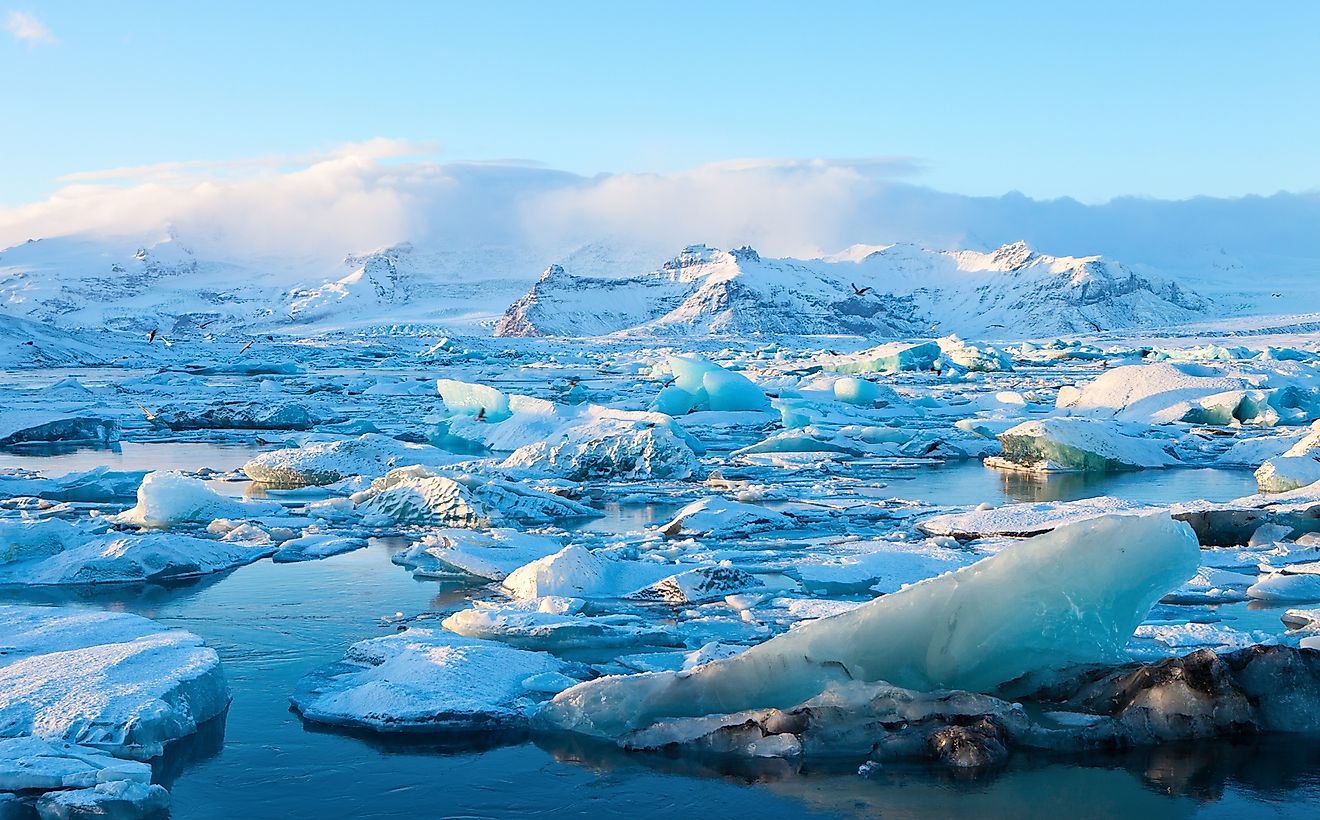What is a Jökulhlaup?

Jökulhlaup (yo-KOO-lahp) is an Icelandic word that directly translates to “glacial run” or “glacial burst.” It is a key part of the deglaciation process of the ice sheet margin in the Alpine mountains. Jökulhlaups are sometimes dangerous both to infrastructure and people and may lead to widespread landform modification through deposition and erosion. In Iceland, the word was used to refer to subglacial outburst floods from the glacier Vatnajökull. It has since been adopted as a glaciological term in many languages.
Definition
Jökulhlaup is a sudden glacial outburst flood or an abrupt release of glacial meltwater from a subglacial or glacier-dammed lake or reservoir. The floods occur suddenly and release large volumes of water, debris, and ice from the glacial source. The meltwater discharge can cause major flooding along the rivers that are fed by the parent glacier. Jökulhlaups are often triggered by a series of activities such as geothermal heating, subglacial volcanic eruption, and the bursting of a dam.
Causes of Jökulhlaup
Glaciers can have lakes sitting between valley walls and ice, inside the glacier itself, or at the top of the glacier. These glacier lakes are often filled with both meltwater and rainwater. As the lake is filled with water, it begins to exert pressure on the ice around or above it, forcing the ice to be lifted or break off. This allows the water in the glacier dam that had accumulated over time to move outwards and flow at once. The high-volume discharge is erosive and contains debris and ice. Jökulhlaup outburst flood takes about 2-4 days for the process to be completed from the initial rise to the final receding flood stage. The tunnel valleys created by the flowing water are finally closed with ice and the flow of water ceases.
Jökulhlaup and Deglaciation
Jökulhlaup is an important part of the deglaciation process and may lead to a change in the landscape both on land and near-shore continental shelve. After the last glacial maximum (LGM) about 21,000 years ago, major Jökulhlaups disrupted the circulation of ocean thermohaline and redistributed sediments from the land into the ocean. Rapid deglaciation increases the frequency of outbursts because it results in increased volcanic activities. Jökulhlaups with impacts on large landscapes are commonly referred to as “megafloods.” These floods can erode spillways and gorges as well as dry waterfalls.
Examples of Jökulhlaups
Iceland
Jökulhlaup was initially associated with Vatnajökull flood outburst in Iceland which resulted from the geothermal heating. Glacial outburst floods have taken place in other places within the country. The Eyjafjallajökull volcano in southern Iceland erupted in April 2010, producing a volcanogenic Jökulhlaup. The floods, which reached a peak of 2,000-3,000 cubic meters per second, damaged the country’s ring road, a route which connects all of Iceland's major cities. Other major examples of Jökulhlaups in the country have been caused by the eruption of the volcanoes Grimsvotn and Katla.
The US
The Juneau area in Alaska is known to have experienced Jökulhlaups in the past. In July 2011, a Jökulhlaup was recorded on Mendenhall Lake with significant flooding recorded along the View Drive and Mendenhall Campground.
Lake No Lake and Tulsequah Lake are both dammed by the Telsequah Glacier. During summer and spring, the two lakes are filled by snowmelt and subsequently empty into Telsequah River through the glacial tunnel. The Telsequah River then joins the Taku River. Sometimes, the Taku River experiences an outburst event.











